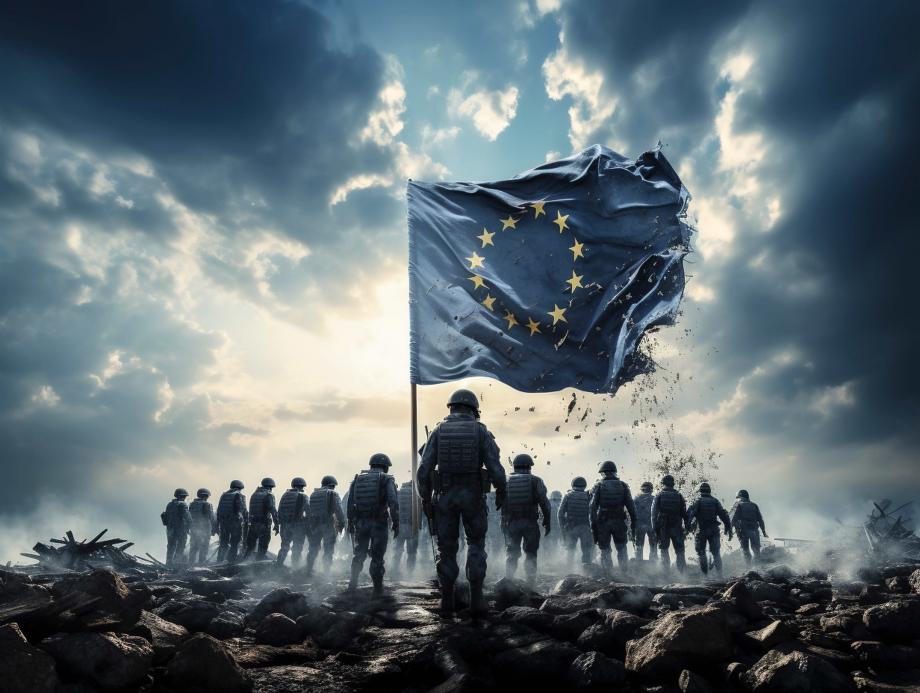The CEE region could help pave the way for enhancing European defence

There have long been (fruitless) debates on the creation of an EU army, with little progress made on the topic. GLOBSEC's Research Fellow, Patrik Szicherle, argues that Central and Eastern European countries could do more in terms of military cooperation, improving their own security and paving the way for a potential joint European force, as there is strong backing for the idea among the population of nine CEE countries recently polled by GLOBSEC: Bulgaria, Czechia, Estonia, Hungary, Latvia, Lithuania, Poland, Romania, and Slovakia.
The debate about a European army has been ongoing for over half a decade. Italian Foreign Minister Antonio Tajani very recently called for the formation of such a force. The issue has already been featured in the debate of lead candidates in the 2019 EP elections. Regardless, years of debate have not even gotten to the point of figuring out what a European army would look like. As of now, the creation of a joint EU force seems far away, but increasing the Union's role in the defence sector is one of the key points on the European political agenda in the face of an increasingly aggressive Russia.
Central and Eastern Europe (CEE), it turns out, can help the EU achieve its goals. The GLOBSEC Trends 2024 polling highlighted that regardless of practical problems, the populations of the nine polled CEE countries are strong supporters of the idea of a European defence pillar – an average of 63% agree that the EU should start creating its own army. Even if results vary from 57% in Czechia to 71% in Romania, this outcome should give political impetus to leaders in the CEE region to engage in discussions on the future of EU defence and act on the issue when an opportunity to do so arises.
Naturally, cooperation between European militaries is not a novel idea, and there are several examples of strengthened defence cooperation in Europe. For instance, the German and Dutch armies are now largely integrated. According to the most recent 2022 German-Dutch Common Army Vision, the two sides will seek to align their army structures and procedures, develop a binational command structure, synchronise the knowledge of their armies, align operational requirements and national procurement processes, and create a shared tactical command and control capability within NATO. Czechia and Romania are also integrating capabilities with Germany as well under NATO's Framework Nation Concept (NATO FNC).
V4 defence cooperation has also been on the agenda for well over a decade. In 2013, a decision was made to create the V4 EU Battlegroup (V4BG). Yet, by the first half of 2023, it had already been put on standby duty three times. Over the years, troops and officers from Ukraine, Croatia, and Latvia have joined the cooperation. The V4BG, similar to any other EU battlegroup, has yet to be deployed due to a lack of political will. However, as the EU prepares to transition to a Rapid Deployment Capacity (RDC) as per the 2022 Strategic Compass for Security and Defence, the existing V4BG could be a centrepiece of this 5000-troop strong modular force, especially if combined with contributions from other CEE member states.
CEE states can and should do more, particularly considering the uncertainties surrounding the practical use of the RDC compared to other EU battlegroups. Moreover, the RDC's planned role is limited. For instance, the RDCs are envisioned to be used in two main scenarios: (1) the initial phase of stabilisation after a crisis and (2) rescue and evacuation efforts. Second, the exact modalities of financing the deployment of the RDC are not yet known.
Pathways to do more remain open. Some or all CEE countries could start integrating their armies under the NATO FNC or join existing cooperations under this umbrella. The participants of the cooperation must be selected carefully, ensuring that there is a high level of trust from all parties. Enhanced military cooperation in the region could ensure that states bordering or near Russia are ready for any provocations from Moscow. The main improvement over the current situation would be the development of the capabilities of CEE armies via army integration, as well as better equipment and more supplies due to the improved coordination of military procurements. Indeed, Czechia has recently been in the spotlight for putting together a coalition to purchase artillery shells for Ukraine. More actions such as that must be done in the future to shore up European defence as a whole.
The support for an EU army across CEE provides the region's politicians a chance to contribute to the EU's goals of enhancing the continent's defence pillar. Nevertheless, there would undoubtedly be obstacles to overcome in terms of decision-making and command structures, resource-sharing, and the explanation of the process to the population. Especially during the implementation, however, maintaining this popular support will be key, for example, by reacting to disinformation narratives, such as the one claiming the Netherlands has lost its army to Germany.
Overall, it is time Europe acted on defence, and it must be done before any nightmare scenarios – such as weakening US commitment to Europe or military action by the Kremlin against EU member states – take place. The CEE region could be a strong contributor to ensuring that the process receives the necessary impetus not to be forgotten.

Research Fellow, Centre for Democracy & Resilience